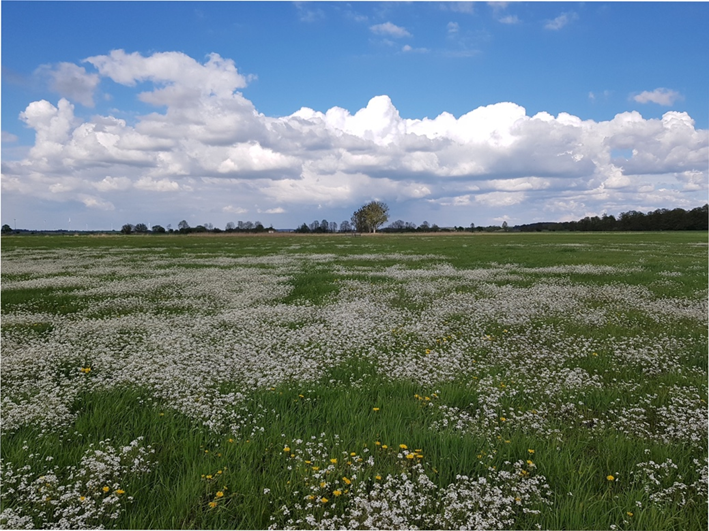Manuele Bazzichetto discusses his article: ‘Biodiversity promotes resistance but dominant species shape recovery of grasslands under extreme drought.’
Background
A hot idea in ecology is that biodiversity helps ecosystems do better. For instance, high biodiversity should help ecosystems to maintain their functions (e.g., biomass production) over time. In other words, biodiversity should stabilise ecosystem functions. This is the ‘biodiversity begets stability’ paradigm. It has been tested in experimental and non-experimental studies, albeit with mixed results.
Extreme climatic events, such as extreme droughts, are among the factors that can disrupt ecosystem functions particularly severely and throw entire ecosystems out of balance. These are climatic phenomena that are rare and exceptionally intense. So far, we don’t know if the ‘biodiversity begets stability’ narrative holds in the face of such extremes, and that is what our study focused on.
Our study
We focused on extreme droughts in grasslands, which support the economy and welfare of a large part of the human population. Specifically, we analysed (i) how biomass production in grasslands resists extreme drought; and (ii) how it recovers one year after the extreme drought. If biodiversity begets stability, will more diverse grasslands be better at resisting and recovering from the effects of drought?
Our approach was to not only focus on taxonomic diversity, which has been done before, but to also look at functional diversity. Functional diversity quantifies how much plants in a community differ in characteristics (traits) such as height, shape of the leaves, and size of the seeds. Communities with high functional diversity are more likely to have traits that can help coping with extreme droughts. We also asked if grasslands with many slow- or many fast-growing species responded differently to drought. In analogy with Aesop’s “The ants and the grasshopper”: slow growing species save resources to survive bad times, while fast growing species quickly consume resources to grow during good times.
Our hypotheses
We expected biomass resistance under extreme drought to be increased by species and functional diversity, as communities with many species and a variety of functional traits will have more strategies to withstand drought. We also expected communities with many slow-growing species, which generally tolerate stress, be better at resisting extreme drought.
On the contrary, we expected communities with many fast-growing species to quickly recover biomass production after extreme drought. In our study area, fast growing communities are usually subject to high land-use intensity (mowing, grazing and fertilisation), which favours highly competitive species, but also reduces species and functional diversity.
What we did
We used an 11-year time-series of vegetation biomass and plant species composition from permanent plots in the Biodiversity Exploratories, a long-term initiative for monitoring biodiversity change in three German regions. These plots were all in managed areas, and so we could study grasslands resistance and recovery under real-world gradients of land use.
Using climate data, we detected dry years that occurred in the three regions during our time-series and focused on these years to analyse how biomass resistance and recovery related to the biodiversity of grassland communities.
What we found
We found that taxonomically and functionally rich communities subject to low land-use intensity were resistant to extreme drought. Conversely, species poor and fast-growing communities subject to high land-use intensity recovered better when extreme drought was followed by average water availability conditions.
Our results thus have a controversial twist: Perhaps, in the face of the expected rise in extreme drought events in the future, the best landscape will have both extensively and intensively managed grasslands. Despite being bad for biodiversity at multiple trophic levels, intensively managed grasslands, with fast communities and low biodiversity, will support biomass production in average climatic conditions; extreme droughts will severely reduce their production, but these grasslands will recover quickly. On the contrary, extensively managed grasslands with high taxonomic and functional diversity, will maintain biomass production even under extreme drought. It is thus crucial to conserve them as extreme droughts become more and more common.


